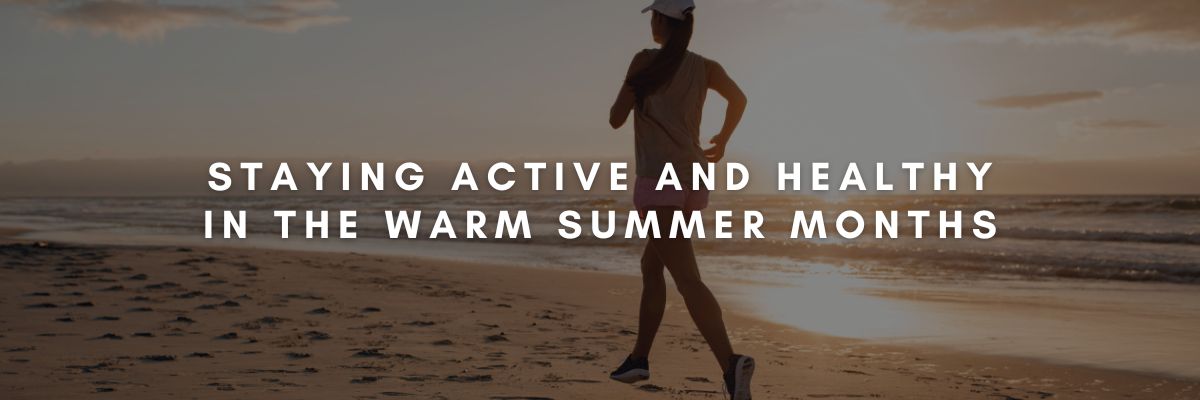- Chapel Hill Bodyworks
Wellness Center
3520 Chapel Hill Road
Johnsburg, IL 60051(815) 578-8430 By Appointment Only
Tue10:00 am - 7:00 pmWed1:00 pm - 7:00 pmThu10:00 am - 7:00 pmFri10:00 am - 7:00 pmSat10:00 am - 2:00 pm
-
Latest Articles:
- • Add These 10 Immune-Boosting Foods to Your Fall Diet •
- • Keep Your Skin Healthy and Glowing with these Fall Skincare Tips •
- • Beat End of Year Burnout with these Fall Self-Care Rituals •
-
- Sign up to receive news and updates and get my free report:“The Top 10 Reasons to Try Acupuncture”

Health WellNews
5 Ways to Stay Fit This Fall

If you are on a fitness roll this summer, you don’t want to “fall” back into old habits (pardon the pun). As the weather gets colder, you might find it challenging to maintain the same fitness routine. Or maybe you took the summer off, and you are ready to kick off a fall campaign to get in shape. Whatever your goals or motivations, here are five tips to keep you on track.
You may be a morning workout person in the summer as you try to beat the heat, but you might need to rethink that as the weather gets colder and the days get shorter. Try an after-work workout to see how you adjust and which one feels better. Pay particular attention to what makes you feel more energized. If you are so tired after a morning workout that you find it difficult to make it through the day, then perhaps you should go for an evening routine. But make sure you can still fall asleep after an evening workout. Once you determine which time of day works best for you, stick to a routine to maintain your results.
Another great tip is to take advantage of the cooler temps to enjoy more outdoor activities like hiking, biking, walking, or running. Incorporate some weekend hikes or just an after dinner walk around the neighborhood a few nights a week. It doesn’t have to be complicated or expensive, just get outside and move!
While you may find yourself motivated to get started or keep your fitness routine going, make sure you set realistic expectations. It’s about progress and not perfection. Setting your expectations too high can set you up for failure so give yourself some grace and know that some days, the weather may not cooperate.
Another great way to keep motivated is to take advantage of all the great fall produce to help fuel your body as you set this new pattern of fitness routine. Nutrition is a key piece of the puzzle so load up on all the great fall fruits and veggies.
Another key piece of advice is to keep some at-home workouts in your back pocket. The weather won’t always cooperate and sometimes you just won’t feel like going out early or making that after work workout a reality. Another way to set yourself up for success is to create a few living room exercise routines. There are dozens, if not hundreds, of workout apps and YouTube videos that can help you maintain your fitness goals while at home.
Whatever you do, just make sure to keep moving! While it might be tempting to curl up under a warm blanket, Netflix and chill, make sure you are incorporating your fitness goals into your day so you can maintain the fitness wins you achieved this summer.
Improve Your Mental Health with Regular Meditation

Meditation has a reputation for several health benefits but what is it exactly? It is defined as the regular process of training your mind to focus and redirect your thoughts. There are some key reasons you might want to consider establishing a regular meditation routine. The overall improvement in your health and wellbeing just might surprise you.
Research proves that meditation can really be a stress reducer. Too much stress in your life can cause sleep issues, depression, anxiety, and even high blood pressure. An 8-week study published in 2013 found that “mindfulness meditation” actually reduced the inflammatory response caused by too much stress.
As mentioned previously, as stress levels decrease, so does anxiety. A 2014 study examined the transcendental meditation technique and found that it reduced anxiety significantly. However, that’s not the only technique that reduces anxiety. Additional research has found that a variety of techniques can reduce anxiety levels. It doesn’t matter what technique you try, just get started!
After the pandemic, we all know just how important it is to maintain our mental health. Regular meditation has been shown to reduce the symptoms of depression by decreasing the levels of inflammatory chemicals called cytokines, which are released in response to stress. It can also help people experience fewer negative thoughts.
Studies also show that regular meditation practices can lead to enhanced performance on visual tasks and a greater attention span than those who don’t regularly practice meditation. And you don’t need to set a goal of meditating for hours on end. Other studies have indicated that even short periods of meditation each day can be a benefit.
And, in case you haven’t noticed yet, each of these benefits just continues to cascade to additional benefits! Now that you know that regular meditation can lead to improvements in attention and clarity, you might be happy to hear that both benefits lead to keeping your mind young and healthy overall.
Studies have found that in addition to fighting the normal age-related memory loss that comes from getting older, meditation can at least partially improve memory in those suffering from dementia. It can also help to control stress and improve coping skills in caregivers.
Even the Mayo Clinic touts the benefits of meditation. They also outline the different types including guided meditation, mantra meditation, mindfulness meditation, Qi gong, tai chi, transcendental meditation, and yoga. They also advise that meditation takes practice, and you will get better at maintaining your focus and breathing the more you engage in the practice.
The bottom line is that meditation is something that everyone can try to improve their mental and emotional health. You don’t have to have a particular level of athletic ability; it doesn’t require a special location or equipment and you don’t have to buy a membership at a gym to try it. A simple Google or YouTube search can get you started. Trying out a variety of styles to see what might work best for you is a great way to begin your meditation journey.
Staying Active and Healthy in the Warm Summer Months
After the cold winter and unpredictable Spring weather we’ve been having, everyone is ready for a warm summer with longer days filled with rest, vacation, and family time. However, the warmer temperatures can often bring unanticipated health risks like seasonal allergies, heat stroke, and bug bites. Read on for a few tips to keep you not only active, but healthy as you embrace those dog days of summer.

Get Moving!
The summer months are a great time to get outside and get moving, especially if you live in a climate that doesn’t allow you to get out much during the winter and early spring months. That additional physical activity can lead to healthy hearts and maybe a trimmer waistline. As the temperatures heat up, it might be tempting to stay inside and enjoy the air conditioning but don’t fall for an all or nothing trap! If it gets too hot in your area, take a walk or an early morning bike ride before the heat is unbearable. If early mornings aren’t your thing, try a late evening stroll to get a little extra fitness in your day.
If you are lucky enough to live near the ocean or close to national parks, then hiking and biking on those gorgeous trails should be on your summer to-do list. A jog along the beach or an ocean swim are also great options. And don’t forget, your body isn’t the only thing that will benefit from the increased physical activity, your mind with thank you as well. Exercise is a great way to boost your mental health and improve your sleep.
Don’t Forget the Sunscreen
While getting outdoors is great, it also comes with risks. Too much UV light from the sun can be hazardous to your health, contributing to skin damage and increased cancer risk. Too much UV exposure can lead the skin to lose elasticity, get deeper wrinkles, and contribute to an overall premature aging of the skin.
To protect yourself, make sure you choose a broad-spectrum sunscreen that blocks both UVA and UVB rays and with a sun protection factor (SPF) of at least 50. And make sure you reapply your sunscreen after swimming or sweating. Getting outside is great for your mental and physical health but not if you burn in the process!
Stay Hydrated
In addition to sun protection, it’s important to make sure you are consuming plenty of fluids in the warmer temperatures. It might be tempting to indulge in those fruity alcoholic drinks, but they are not effective against dehydration, and neither is caffeine. They make it more difficult for the body to stay properly hydrated because they increase the body’s fluid output. Chronic dehydration can lead to serious complications such as kidney failure and shock.
Signs you might be dehydrated include:
- Dry mouth
- Headache
- Dizziness
- Muscle cramps
- Little or no urination
Saying healthy and active is definitely doable over the summer with just a little bit of planning and awareness. So, get outside and enjoy these long, warm days while you can!
Three Tips to Stay Mentally Strong This Summer
While many look forward to the summer months filled with vacations, time outside, and less structure, others can feel overwhelmed and out of control. For those struggling with anxiety or depression, the care-free days of summer can feel anything but. Read on for three simple tips to help keep your mental health in check this summer.

Tip #1: Get Outside and Get Active
The first tip is to get outside and get moving! Getting regular exposure to natural sunlight increases your level of vitamin D and serotonin which are known mood-boosters. Take an evening or early morning walk to beat the heat, take a walk on the beach and feel the sand between your toes and the waves lapping at your ankles, or simply sit on a porch and watch the sunset. Outdoor hobbies like gardening, biking, or hiking are also great ideas to incorporate into your summer plans.
If you aren’t the gym type, try a simple yoga class or just taking a walk outside. It’s easy to use the heat as an excuse to binge-watch Netflix and chill, but don’t do it! Even just 20 to 30 minutes of activity each day can help you feel fit and boost your mood. You will be surprised by how good you feel as you develop this habit over the summer.
Tip #2: Plan a Vacation
Everyone needs a little getaway now and then and using your vacation time to plan a trip and unplug is key to refocusing your energy and clearing your mind. It’s tempting to use your vacation time to accomplish household chores or other things that need to get done in your personal life, but you also need to enjoy yourself and recharge your batteries.
If funding limits how far you can travel, a staycation works, too. Just don’t try to clean the garage or remodel your kitchen. Read that bestseller you’ve been putting off, hit a local pool or the beach if you live close by. Take a day trip to a museum or water park to get a change in scenery. Just do something fun! Getting away from your everyday routine can clear your mind and boost your mood. It’s important to unwind and refocus when you can.
Tip #3: Establish a Healthy Sleep Schedule
With summer comes relaxed bedtimes and sleeping in later than usual. But just because you can doesn’t mean you should. Experts recommend 8 to 10 hours of uninterrupted sleep per night and going to bed and waking up at about the same time every day helps, too. This doesn’t mean you can’t occasionally indulge in a late morning, but keeping things consistent helps you maintain good sleep hygiene habits which also contributes to your physical and mental well-being.
Use these tips to check in with yourself and make sure you are on track to stay physically and mentally strong this summer.
Planning the Perfect Summer Vacation
It’s that time of year when the perfect summer getaway is within reach. Whether you are looking for a beach vacation or a mountain retreat, it’s never too early to begin researching the perfect summer vacation. Here are a few suggestions to get you started and ensure a successful and relaxing trip!

Book Early vs. Last Minute Deals
The summer season is often the peak vacation time for many destinations so if that’s the case with your preferred location, you might want to book early to take advantage of any flight, hotel, or rental car deals. Set alerts or, if you can be flexible, fly during non-peak times during the week as opposed to the weekends. You can also set alerts for your preferred hotel company or join their loyalty program to take advantage of any offers there.
While planning ahead can be a great way to score a deal before prices rise, sometimes leaving a little wiggle room for any last-minute deals can score even bigger savings. Venues might offer discounts for unclaimed tickets or cancellations. Don’t be afraid to ask about any sales or promotions. It’s always best to keep your options open!
Get Family Buy-In
You might have grand plans about a Hawaiian beach getaway, while the rest of the family is thinking theme park extravaganza. It’s important when planning a family vacation that you get buy-in from everyone on the location and itinerary. Make sure you include activities for each member of the family and get everyone involved in the planning process. When everyone is excited and looking forward to going, you won’t have unexpected battles to fight down the road. Pro tip: If you have kids, keep them busy wherever you go! From activities to keep them busy on the flight to daytime fun when you reach your destination, you want to make sure the kids are active enough to have fun and be ready for bed when the day ends.
Less Stress, More Relaxation
Everyone in your family may have a different idea of what a stress-free and relaxing vacation looks like. Some people like to pack every minute full of activities as they explore a new place while others want to lie on the beach or by the pool all day every day. No matter what your speed, plan some time to relax and take in your surroundings.
And definitely don’t add unnecessary stress to your vacation. If flying is too much for your family, consider a road trip. If getting to the airport is the most stressful part of the trip, consider a ride share option so you don’t have to worry about parking. Also, check your credit card rewards to see if you have access to an airport lounge. A lounge is a great way to relax before a flight.
And the most important advice is to enjoy the experience and make memories with your friends and family no matter where your trip takes you.

